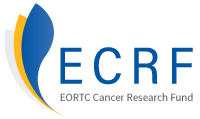MISSION
The Group’s research aims to contribute to better patient management at various stages of head and neck cancer by promoting and validating new treatments and examining individual responses to therapies. Studies focus on area or locally advanced cancers such as salivary gland cancers that are recurrent and or metastatic.
PRACTICE CHANGING RESEARCH
Squamous cell carcinoma (SCC) is the second most common skin cancer, the first being melanoma. It begins in the squamous cells of the body. These thin, flat cells are found in the tissue that forms the epidermis, or outmost layer of the skin, as well as the lining of hollow organs and of the respiratory and digestive tracts. About 90% of head and neck cancers* are squamous cell carcinomas (SCCs). SCC of the head and neck (HNSCC) is the sixth most common cancer worldwide, with 890,000 new cases and 450,000 deaths in 2018. The incidence of HNSCC continues to rise and is anticipated to increase by 30%, or 1.08 million new cases annually by 2030, according to Global Cancer Observatory (GLOBOCAN)). Currently only about half the patients with an HSNCC are still alive five years after their diagnosis. This is in part due to the fact that the majority of these patients consult at a late stage and already have cancer that has spread to their lymph nodes at the time they are diagnosed.
* Head & Neck cancer: Term used to describe a number of different cancers that develop in or around the throat, larynx, nose, sinuses, and mouth.
LATEST PUBLICATIONS
Want to read in detail our scientific findings on specific tumour type?
Search through our comprehensive list of EORTC published articles to date.



